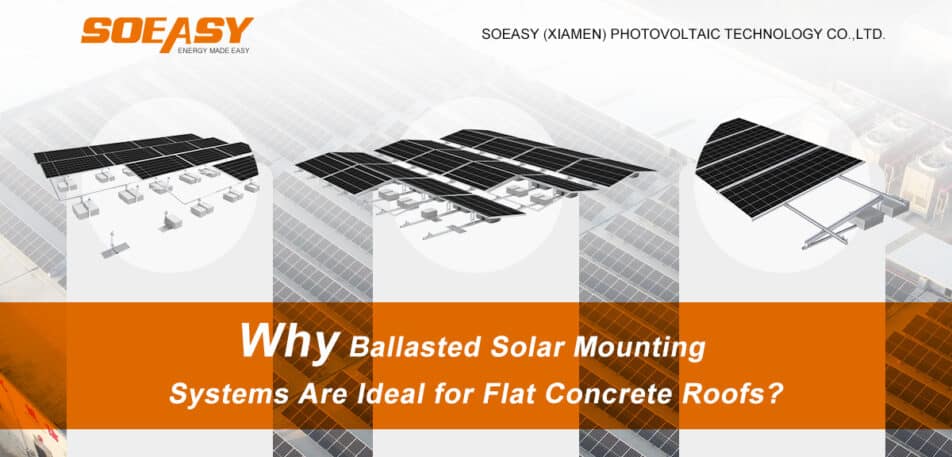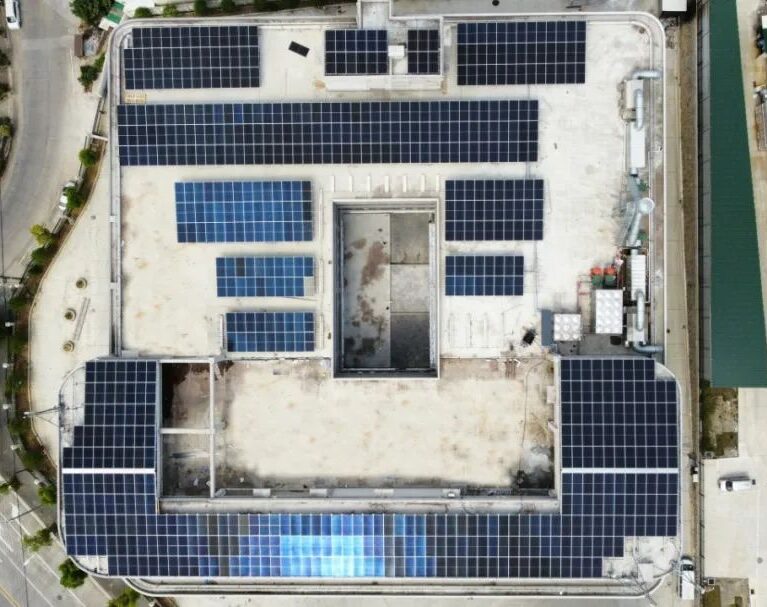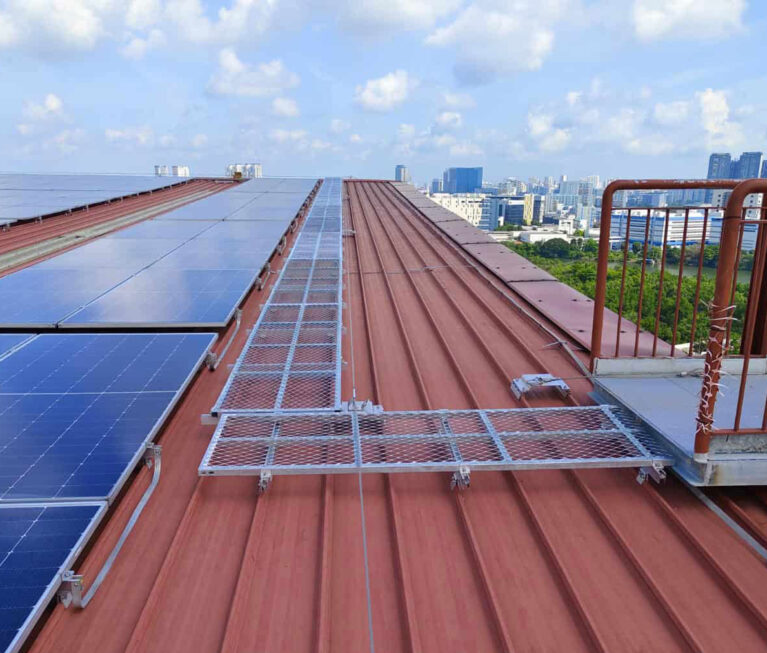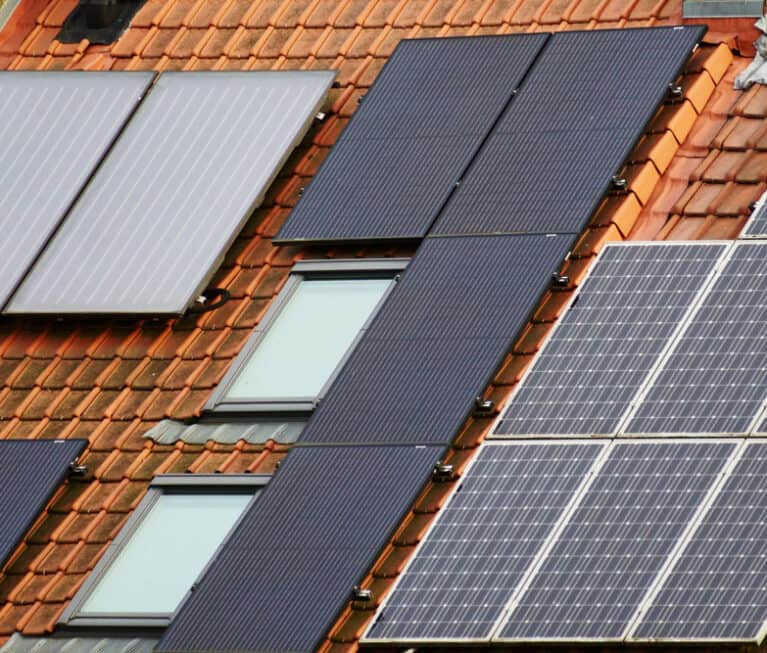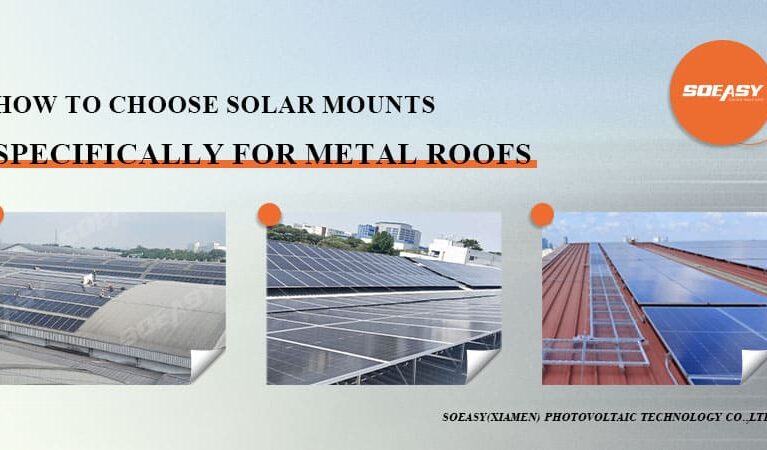In distributed solar power plants, rooftop installations often sit on concrete or metal sheet roofs. For commercial and industrial enterprises, flat concrete roofs represent a significant share of available space. These rooftops provide an excellent foundation for distributed solar systems, enabling businesses and property owners to reduce energy costs while meeting sustainability goals.
However, the choice of a suitable solar mounting system directly influences project safety, installation efficiency, and long-term returns. Among the various options, ballasted solar mounting systems have gained wide popularity for flat concrete roofs. This article explains what they are, highlights their main advantages, outlines critical design considerations, and shows why more clients prefer this solution.
1. What is a Ballasted Solar Mounting System?
A ballasted solar mounting system is designed specifically for flat roof applications in both commercial and residential projects. Instead of drilling into the roof, the system stays secure by placing additional weights—such as concrete blocks or sandbags—onto the mounting structure. This approach keeps the array stable against external forces like strong winds or seismic loads, while the roof surface remains intact.
Typical components include:
- Main beams and tilt supports – provide stability and module inclination.
- Ballast trays or blocks – hold the concrete weights.
- Clamps and connectors – secure PV modules firmly.
- Roof protection pads – prevent abrasion or puncture of the waterproof layer.
- Drainage channels and cable accessories – ensure safe and tidy system operation.
Because the design is non-penetrating, adaptable, and easy to maintain, ballasted systems have become a practical option for modern flat roof solar projects.
2. Key Advantages of Ballasted Mounting on Flat Concrete Roofs
① Non-Penetrating Design — Protecting the Roof Structure
The most notable advantage is that no drilling is required. Unlike fixed systems that penetrate the waterproof membrane, a ballasted system prevents leakage risks and avoids expensive roof repairs.
② Fast Installation with Minimal Roof Disruption
Standardized and pre-assembled parts allow rapid deployment. Since most preparation is completed in the factory, on-site installation only requires assembly and ballast placement. As a result, project timelines shorten, and rooftop operations face minimal disturbance.
③ Reversible and Easy to Maintain
Because no permanent fixation exists, the system can be dismantled or relocated during roof renovations. Maintenance is also convenient: workers can simply remove a few ballast blocks when access is needed.
④ Compatible with Different Roof Types
Ballasted systems adapt to flat concrete roofs as well as asphalt or paver-covered surfaces. Furthermore, small irregularities can be corrected using shims or leveling pads, offering broad versatility.
⑤ Reduced Civil and Structural Costs
No drilling, grouting, or waterproofing work is necessary. Consequently, overall civil engineering costs decrease, especially in large commercial projects.
⑥ Long Service Life and Corrosion Resistance
Manufacturers use high-grade aluminum alloys and stainless-steel fasteners. These materials ensure durability, corrosion resistance, and minimal long-term maintenance.
⑦ Modular and Scalable
System expansion is straightforward. Additional rows can be added to unused roof space with limited redesign, keeping upgrade costs low.
⑧ Ideal for Sensitive Commercial Scenarios
Many facilities—such as schools, hospitals, offices, and warehouses—demand non-invasive rooftop solutions. A ballasted system fulfills these requirements, making it both safe and flexible.
3. Key Considerations for Installing Solar Mounts on Concrete Roofs
① Roof Load-Bearing Capacity
Flat roofs are typically designed for self-weight, live loads, wind, and snow loads—but not always for extra solar ballast weight. Without proper assessment, excessive ballast may cause cracks, deflection, or even structural failure.
Solution: Conduct structural evaluations and static load analysis before installation. Use lightweight ballast where necessary and distribute weight evenly to avoid point loading.
② Protecting the Waterproofing Layer
The waterproofing membrane is one of the most vulnerable parts of a roof. Damage can cause leaks and long-term building issues.
Solution: Install rubber or protective mats under all contact points, and ensure no sharp edges touch the roof. A non-penetrating ballasted system already reduces the risk of leakage significantly.
③ Local Wind and Snow Conditions
Climate conditions vary widely by region: typhoons in coastal areas, heavy snow in northern regions, or high sustained winds in plateaus.
Solution: Design strictly in line with local codes (GB, ASCE, Eurocode, etc.) for wind and snow loads. Add ballast or anchoring at roof edges and corners where uplift forces are highest.
④ Installation Schedule and Business Operations
For factories, shopping malls, or office buildings, construction noise and personnel movement can affect operations.
Solution: With high pre-assembly, ballasted systems shorten construction time and allow phased installation—enabling parts of the system to be operational while other sections are still being built.
⑤ Cost and Long-Term ROI
Cheap but low-quality racking may seem economical upfront but often leads to higher long-term costs due to frequent maintenance or corrosion.
Solution: Evaluate not only upfront costs but also lifecycle benefits, including durability, reduced maintenance, and stable long-term energy yield. High-quality materials deliver better overall investment returns.
Optimizing Flat Roof Solar Projects with Ballasted Mounting Systems
Ballasted solar mounting systems deliver a safe, efficient, and roof-friendly solution for flat concrete rooftops. With advantages such as non-penetrating installation, quick deployment, and easy reversibility, they have become a preferred choice for commercial and industrial distributed PV projects worldwide.
SOEASY Solar has focused on advancing distributed PV solutions, backed by a leadership team with over 17 years of industry expertise, designing and manufacturing systems that combine engineering reliability with cost efficiency.
Click here to explore our roof mounting solution: SOEASY Solar Roof Mounting Systems
📩 Contact us today for expert advice and tailored ballasted solutions. Our team is ready to provide fast, reliable, and professional support for your next solar project.
 English
English 

